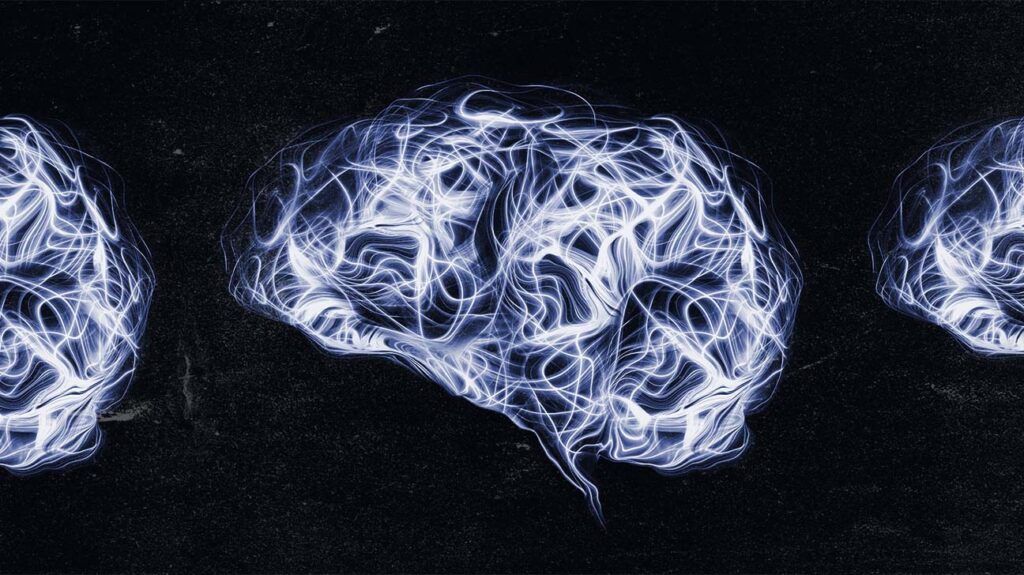Doctors may use brain imaging scans, such as MRI, CT, and PET scans, as one way to help detect and diagnose dementia. However, a brain scan alone does not provide enough information for a diagnosis.
Brain scans are one of several tools a doctor can use to gather information for a dementia diagnosis.
The images from a scan may reveal visually apparent changes in the structure or function of the brain. These images, combined with the results of other diagnostic tests, can help a doctor determine whether someone has dementia.
This article explains how dementia appears on a brain scan, the types of scans doctors may use, other diagnostic steps, and when to contact a doctor.

Dementia does not refer to one specific condition. Rather, it refers to various symptoms of cognitive decline. Dementia encompasses symptoms that affect thinking, memory, mood, and communication.
The neurological condition Alzheimer’s disease is the
Brain scans
Brain scans may also help doctors rule out other problems or help confirm a diagnosis. However, the results of a brain scan are not enough for a doctor to make a diagnosis of dementia.
Brain scans can also help doctors detect different types of structural changes in the brain depending on the type of dementia a person has. These may
- Alzheimer’s disease: A brain scan may reveal changes in the hippocampus area of the brain, where damage from Alzheimer’s typically begins. Brain tissue may appear shrunken.
- Vascular dementia: Brain scans can help doctors determine the extent of damage to blood vessels in vascular dementia. Doctors may also use brain scans to look for evidence of stroke, which is a risk factor for the condition.
- Frontotemporal dementia: This type of dementia may cause shrinkage in the frontal and temporal lobes, which may be visible on an imaging scan.
There are
An MRI scan can provide more detailed information about the brain’s structure than a CT scan. If results from one of these scans are inconclusive, a doctor may recommend a PET scan. It can detect abnormalities in the brain’s blood flow or metabolism.
A doctor may not always include a brain scan in their diagnostic process, especially if other test results show a high likelihood of dementia.
MRI scan
An MRI scan uses radio waves and a magnetic field to create detailed images of structures in the body.
A doctor may use an MRI scan for various reasons when diagnosing dementia. These include to:
- detect structural changes in specific areas of the brain that may indicate dementia, such as tissue shrinkage
- help confirm a dementia diagnosis and the cause of the symptoms
- gather detailed information on damage in the blood vessels from vascular dementia
CT scan
A CT scan provides several two-dimensional, sectional images of bodily tissue. A computer can combine these images into a more detailed, three-dimensional cross-sectional image.
A doctor may use a CT scan to check for signs of a tumor or stroke in the brain, which could be the cause of dementia symptoms. However, a CT scan cannot provide detailed information about the brain’s structure.
PET scan
A PET scan uses radiation to provide colorful, multidimensional images of areas of the body. The scan can help doctors understand both the structure and function of an organ.
A doctor will not typically recommend a PET scan to diagnose dementia.
A PET scan may be appropriate if the results of an MRI or CT scan are uncertain or if a doctor requires information on changes in the brain’s blood flow. This type of scan may help doctors detect changes in brain function that could indicate dementia.
To diagnose dementia, a doctor may first assess a person for underlying conditions that may be causing their symptoms.
Once a doctor has ruled out other causes, they may perform or order several tests. These may
- a physical examination and medical history
- neurological evaluations, such as reflex and balance tests
- cognitive evaluations, such as memory, problem-solving, and language skill tests
- laboratory tests, such as blood and other fluid tests
- a psychiatric evaluation to determine whether mental health conditions may be contributing to or causing symptoms
- genetic testing, which can help reveal a person’s risk of developing dementia
A person who experiences any symptoms of dementia or notices them in a loved one should contact a doctor. The signs and symptoms of dementia can vary but may
- feeling confused
- experiencing memory loss
- exhibiting poor judgment
- repeating questions
- having difficulty paying bills or handling money responsibly
- getting lost in familiar areas and wandering
- having difficulty with communication, such as speaking, understanding, and expressing thoughts
- having difficulty reading and writing
- using unusual words to describe familiar objects
- exhibiting impulsive behavior
- experiencing movement and balance issues
- becoming disinterested in daily activities
- taking a long time to complete familiar tasks
- having an uncaring attitude about other people’s feelings
- experiencing hallucinations, delusions, or paranoia
Doctors may use brain scans as part of the diagnostic process for dementia. Imaging scans such as MRI and CT scans can help identify other potential causes of a person’s symptoms, such as strokes or brain tumors.
Scans may also help detect changes in the structure of the brain, such as tissue shrinkage, that could indicate dementia.
Doctors may perform or order several tests to diagnose dementia alongside brain scans. These can include laboratory tests, cognitive tests, and neurological tests.
A person should contact a doctor if they or a loved one experience any symptoms of dementia.
